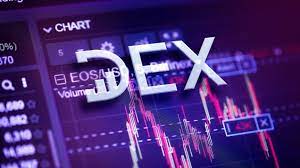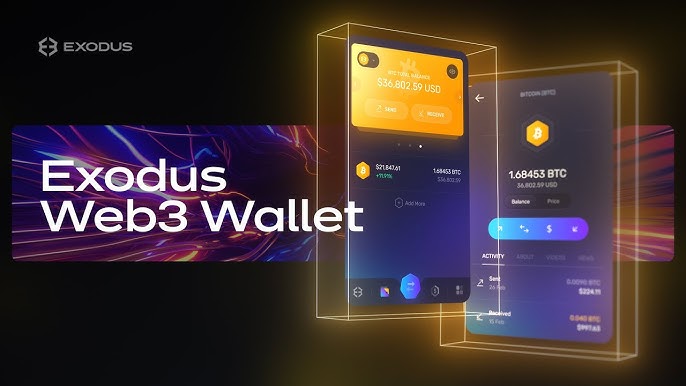Uniswap, a decentralized exchange (DEX), has transformed the uniswap exchange landscape of decentralized finance (DeFi). In a world where centralized exchanges traditionally ruled, Uniswap offers users an innovative and trustless way to exchange digital assets directly on the Ethereum blockchain. Through its automated market-making (AMM) protocol, Uniswap ensures liquidity without relying on centralized order books or market makers. Let’s dive deeper into the factors that make Uniswap a groundbreaking protocol.
What is Uniswap?
Launched in November 2018 by Hayden Adams, Uniswap allows users to swap ERC-20 tokens on the Ethereum blockchain in a decentralized manner. Rather than using traditional market orders, Uniswap operates on an AMM model where liquidity is provided by users who deposit assets into liquidity pools. These pools are used for swapping tokens, with liquidity providers (LPs) earning transaction fees as compensation for their contributions.
The protocol eliminates the need for a central authority, such as an exchange, to facilitate transactions. The decentralized nature of Uniswap gives users greater control over their assets, reduces the risk of hacking or fraud, and promotes censorship resistance.
The Core Mechanism: Automated Market Makers (AMMs)
Unlike centralized exchanges that depend on an order book model, Uniswap uses the AMM protocol to set the price of assets. In an AMM, the price of a token is determined by the ratio of the assets in the liquidity pool rather than being set by buyers and sellers bidding against each other.
When a trade is made on Uniswap, it alters the ratio of assets in the pool, which in turn shifts the price. The mathematical formula that governs this process is known as x * y = k, where:
- x is the quantity of one asset in the pool
- y is the quantity of another asset
- k is a constant that remains unchanged
This formula ensures that the pool remains balanced and allows for continuous trading.
Liquidity Pools and Providers
The success of Uniswap’s AMM model is heavily reliant on liquidity pools. These pools consist of two tokens, and they enable traders to swap one token for another seamlessly. Users who provide liquidity to these pools are known as liquidity providers (LPs). In exchange for their contributions, LPs earn a portion of the trading fees generated by the protocol, which is typically 0.3% per transaction.
The beauty of Uniswap lies in its simplicity: liquidity providers can earn passive income without needing to actively manage their investments. However, there is a risk involved called impermanent loss. This occurs when the price ratio of the assets in the pool changes significantly, leading to LPs receiving fewer tokens than they initially deposited when they withdraw.
Despite this, Uniswap’s ability to allow anyone to participate in liquidity provision and earn rewards has played a critical role in the growth of DeFi.
Uniswap V2 and V3: Advancements in Functionality
Uniswap has evolved significantly since its inception. The original Uniswap V1 protocol had basic functionality, but it faced some limitations. In May 2020, Uniswap V2 introduced several key improvements:
- ERC-20 to ERC-20 swaps: In the past, users could only trade ETH for ERC-20 tokens or vice versa. Uniswap V2 allowed for direct swaps between two ERC-20 tokens.
- Price oracles: V2 introduced decentralized price oracles, which improved the ability to fetch off-chain data.
- Flash swaps: This feature allowed users to borrow assets for a short period of time to execute arbitrage trades or other strategies.
The release of Uniswap V3 in May 2021 brought even more enhancements to the protocol:
- Concentrated liquidity: LPs can now concentrate their liquidity within specific price ranges, improving capital efficiency and increasing potential returns.
- Multiple fee tiers: Uniswap V3 allows liquidity providers to choose from different fee tiers based on the volatility and risk of the assets they’re providing liquidity for.
- Non-fungible liquidity positions: In V3, liquidity positions are represented as NFTs, allowing for more flexibility and customization.
These upgrades have solidified Uniswap’s position as one of the most widely used decentralized exchanges in the DeFi space.
The UNI Token and Governance
Uniswap’s native token, UNI, plays a central role in the protocol’s governance. Launched in September 2020, UNI is an ERC-20 token that allows holders to propose and vote on protocol upgrades and changes. Uniswap’s governance model is decentralized, meaning that anyone holding UNI tokens has a say in the future direction of the protocol.
This decentralized governance structure gives the Uniswap community the power to shape the protocol’s future, making it an integral aspect of the decentralized ecosystem.
Uniswap’s Impact on DeFi
Uniswap has been at the heart of the DeFi revolution. It has empowered users to trade assets directly without intermediaries and has facilitated the growth of many decentralized applications (dApps) and services. Some key impacts include:
- Increased liquidity: Uniswap has made liquidity accessible to anyone with cryptocurrency, allowing smaller projects and tokens to gain liquidity and visibility.
- Democratization of finance: By allowing anyone to participate as liquidity providers, Uniswap has played a significant role in the democratization of finance.
- Innovation: Uniswap’s open-source nature has inspired countless other projects to build on top of its protocol or create similar decentralized exchanges, further expanding the DeFi ecosystem.
The Challenges and Future of Uniswap
Despite its success, Uniswap faces challenges. The Ethereum network, on which Uniswap operates, has been notorious for high transaction fees, particularly during times of network congestion. This has led to users seeking alternative Layer 2 solutions or other blockchain networks with lower fees.
Uniswap has acknowledged this issue and is actively exploring ways to integrate with Layer 2 solutions, such as Optimism and Arbitrum, which aim to offer faster and cheaper transactions.
Furthermore, the protocol faces competition from other DEXes and AMMs like SushiSwap, PancakeSwap, and Balancer, which offer unique features and benefits. However, Uniswap’s established brand, high liquidity, and continued innovation give it a competitive edge.
Conclusion
Uniswap has fundamentally changed the way we trade cryptocurrencies. With its decentralized, trustless design and its use of automated market makers, it has opened new possibilities for both traders and liquidity providers in the DeFi space. While challenges such as high gas fees and competition persist, Uniswap’s ability to adapt and innovate ensures that it remains at the forefront of the decentralized finance revolution. As the DeFi ecosystem continues to expand, Uniswap will undoubtedly play a pivotal role in shaping its future.




